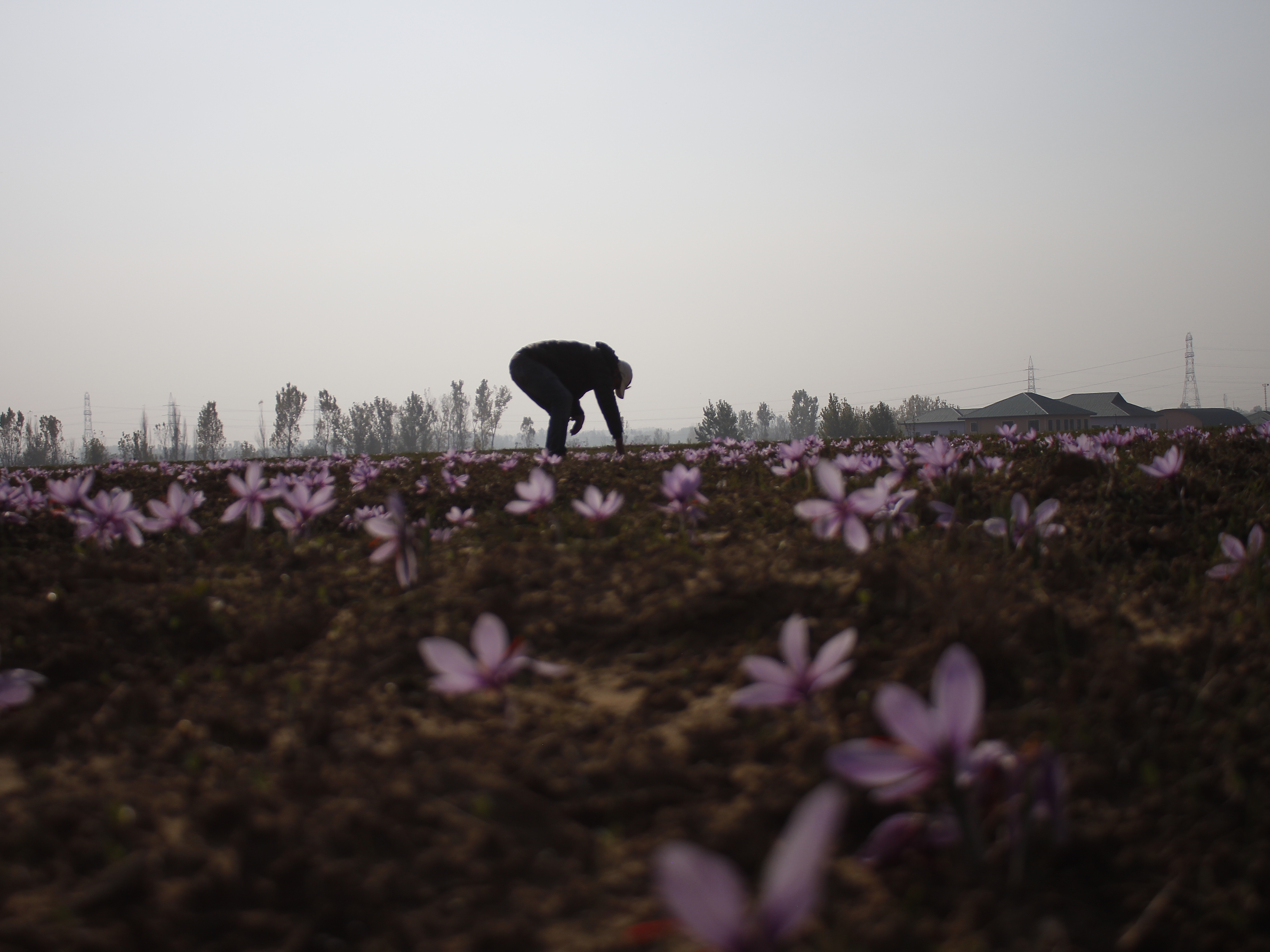‘Production is estimated to be 20-25% less than last year’.
New Delhi: After the saffron harvesting has come to a close in Kashmir, farmers are claiming that the crop production has been lesser than last year and attribute the decline to climate change, lack of irrigation facilities and lesser availability of saffron seeds. Syed Samiullah from Pampore, a saffron producing farmer with considerable amount of land under saffron cultivation, said that the “production we have calculated is 20-25% lesser than the yield of last year”. In 2020, saffron production had a bumper crop crossing over 13 tonnes which was a record high in a decade, but this year, farmers on an individual scale have estimated 20% lesser production than last year, though the official figures are not out yet.
Abdul Majeed Wani, president of the Saffron Association, told The Sunday Guardian that there is lack of irrigation facilities on field and also “we have requested the government to bring up nurseries as we don’t have much availability of saffron seeds and that could be the big reason why the production has decreased”.
Although there are reports that saffron farmers have had a bumper crop, the on-ground report suggests that only those who have had a little land and could produce a little crop before, saw an increase in their production. High quantity saffron producing farmers have different estimates and estimate their production to be 25% lesser than last year. There are three turns in which farmers pluck the stigma (red-orange filament) from the saffron flower. The harvesting happens in the 15-day phase in which the stigma continues to grow, and the plucking happens after every five days.
Samiullah added: “The first turn of harvesting we had lately was bumper for all of us, but then there was a subsequent decrease in the second harvest and least yield in the final harvest.” It takes around 5,000 flowers to produce 30 gram of saffron—making it very high-valued and the most expensive spice in the world (by weight). There is around 3,700 hectares of land under saffron cultivation in J&K Union territory of which 3,200 hectares is cultivated in Pampore town.
The sorting process of saffron from collecting the purple flowers to pulling the red-orange filament is often a family enterprise. According to a report, there are more than 16,000 families that depend on saffron farming out of which 11,000 are women. Muneeb Ahmed, who owns a saffron farm in Pampore, said the unprecedented cold that Kashmir witnessed was the biggest factor disallowing the stigma to grow in full bloom. Another farmer from Pampore said that the “official date for us to start harvesting is 21 October, but of late, due to the changes in climate, we have been harvesting from 25 October which continues till the first week of November”.
Ab Majeed Wani said: “This year, farmers who had sprinklers installed were thus able to irrigate their saffron lands which got them a good harvest unlike those who didn’t have means to install them. The Mechanical Department failed to complete the wells and irrigation sprinklers in the given period which contributed to the production failure.” Official documents from the agriculture department revealed that 198 weeders and 160 hot air-dryers have been distributed on 50% subsidy. Out of 128 bore wells, 108 wells have been completed, leaving 20 wells still under construction. However, the prominent setback in this project was the failure to provide the sprinkler system. Under the project, 128 sprinkler systems had to be constructed, out of which only 52 sprinklers have been completed and 72 sprinklers are yet to reach completion.
Ghulam Muhammad, a saffron farmer, blamed the unfavorable precipitation and lack of alternative to irrigate his land, “We are not getting the expected production from our saffron fields. I have 40 kanals (2 hectares) of land under saffron cultivation and I hardly reach 500 grams of production.”
As per official data given by the Agriculture department, there was a drastic decrease in saffron production from 16.45 metric tonnes around two decades back to 5.2 metric tonnes in 2018; in 2019, its production was estimated 5.91 metric tonnes. 2020 saw the highest saffron production in a decade, but this year the production may see a fall.

